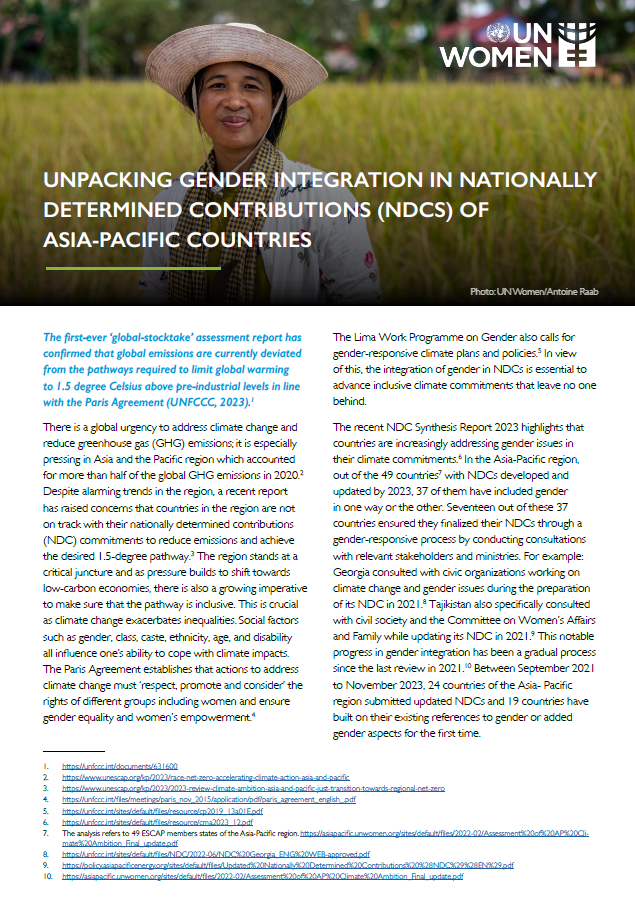
Unpacking Gender Integration in Nationally Determined Contributions (NDCs) of Asia-Pacific Countries

The first-ever ‘global-stocktake’ assessment report has confirmed that global emissions are currently deviated from the pathways required to limit global warming to 1.5 degree Celsius above pre-industrial levels in line with the Paris Agreement (UNFCCC, 2023).
There is a global urgency to address climate change and reduce greenhouse gas (GHG) emissions; it is especially pressing in Asia and the Pacific region which accounted for more than half of the global GHG emissions in 2020. Despite alarming trends in the region, a recent report has raised concerns that countries in the region are not on track with their nationally determined contributions
(NDC) commitments to reduce emissions and achieve the desired 1.5-degree pathway. The region stands at a critical juncture and as pressure builds to shift towards low-carbon economies, there is also a growing imperative to make sure that the pathway is inclusive.
While the trend of increasing gender integration in NDCs in the Asia-Pacific region is notable, the degree and extent of integration vary significantly between the countries. This paper analyses gender references in Asia-Pacific NDCs.